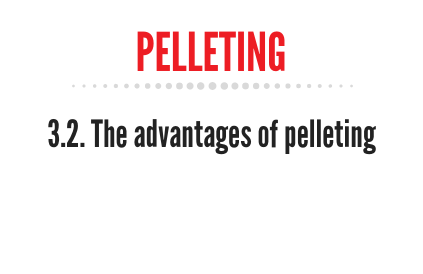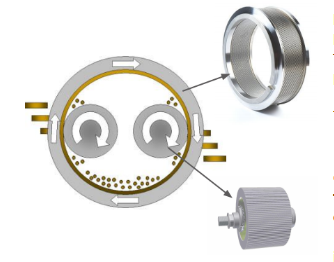The advantages of pelleting

Basically, the purpose of pelleting is to take a finely divided, sometimes dusty, unpalatable and difficult-to-handle feed material and, by using heat, moisture and pressure, form it into larger particles.
into larger particles.
These larger particles are easier to handle, more palatable and in improved feeding results when compared to the non-pelleted feed.
The advantages of using pelleted feed are:
1) The heat generated in conditioning and pelleting make the feedstuffs more digestible by breaking down the starches.
2) The palatability of the feed is increased.
3) The segregation of ingredients in a mixing, handling or feeding process is prevented. By feeding a pelleted feed, the animal is more apt to receive a totally mixed ration than one that has separated through these processes.
4) Waste during the eating process is minimized. When pelleted feed is fed, each animal receives a well-balanced diet by preventing the animal from picking and choosing between ingredients.
5) Bulk density is increased, which enhances storage capabilities of most bulk facilities. Shipping facilities are also increased, thereby reducing transportation costs.
6) Feed in pellets forms reduces natural losses because it reduces the formation of dust.
7) The time and energy consumption for the prehension of the food is decreased.
By combining moisture, heat and pressure on feed ingredients, a degree of gelatinization is produced which allows animals to better utilize the nutrients in these ingredients. Consequently, feed conversion will be improved. These advantages are particularly noticeable in the broiler industry, but the feeding merits of pelleted feeds over the mash form have also been repeatedly demonstrated in the feeding of swine. Compared to the feed in a mash, the + 25% fine pellets guarantee + 7% of nutrient efficiency, instead of the pellets without fine stand at + 14%.